A Space for Both Sexes
It’s an age-old dilemma! When a man and a woman decorate together, whether it’s the first time or the tenth time, there will always be some level of conflict. Today, both men and women feel equally passionate about their own personal style, favourite colours and things they just can’t let go of.
What appeals to one gender won’t necessarily be embraced by the other — and that’s when battles begin! Finding neutral ground is the only way to keep the peace and create spaces both sexes will love!
The room below is the perfect example of how to neutralize the decor of a space. The black leather sofa threatened to impose a strong masculine look on the room until Jane painted the wall behind it a dark gray, making the sofa almost disappear. The addition of white accessories and pops of colour distributed around the room add eye-catching contrast that will appeal to both sexes.
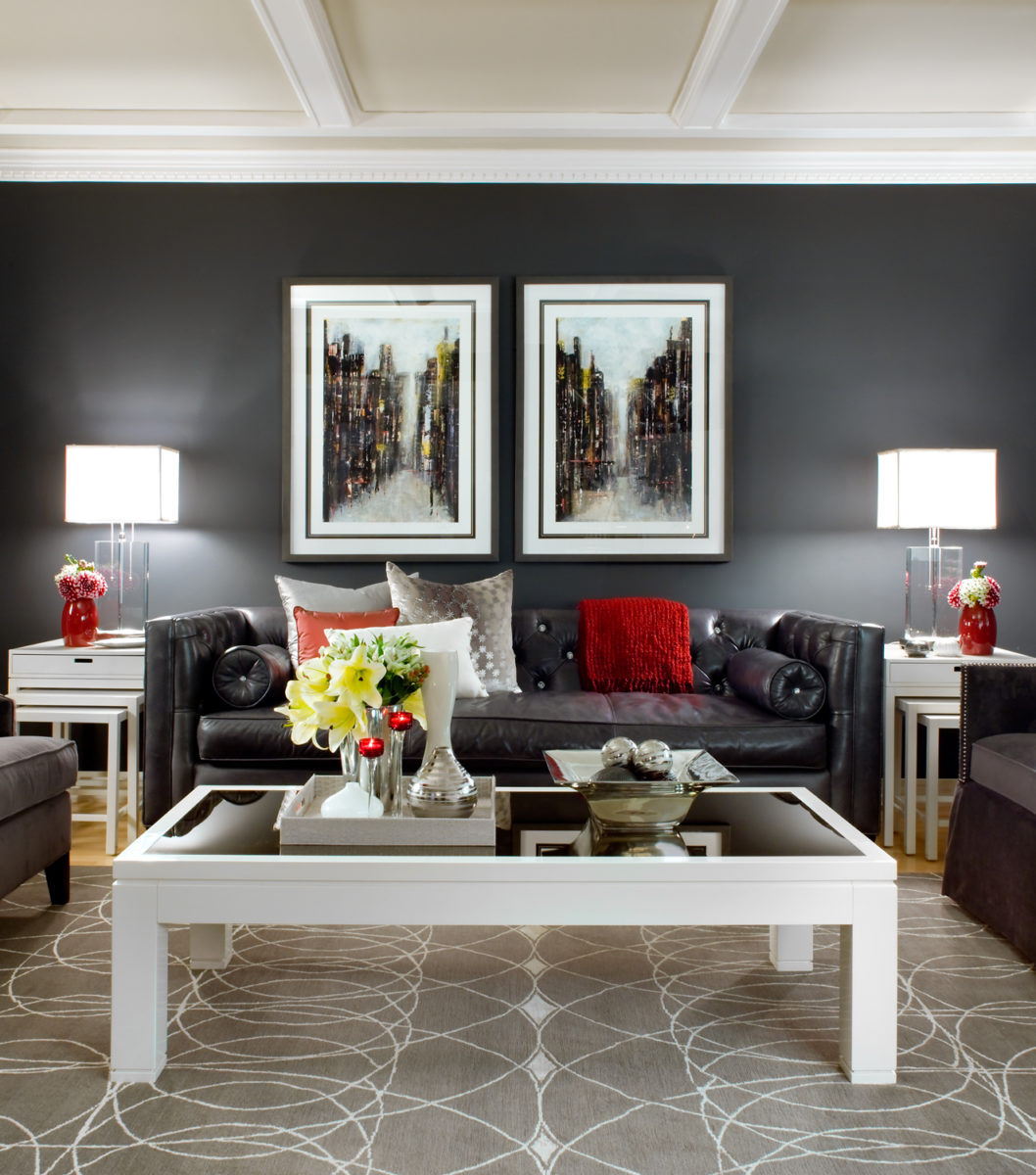
It’s not always necessary to remove masculine or feminine items from a space — simply disguise them.
Today, fashion is making inroads to break the stereotype that blue is for boys and pink is for girls but many of us are still pretty traditional when it comes to our decor and find it hard to accept that colour has no gender bias. It’s simple things like:
- the subtle nuances of paint colour
- a piece of patterned fabric
- the shape of a furniture piece that will define the difference between a masculine or feminine space and one that equally expresses the tastes of both sexes.
Here are some of Jane’s simple tips on creating gender-neutral spaces without compromising anyone’s personal style.
Use a mix of shapes, patterns, and colours. This allows both sexes to express their taste within a space.
If you love florals but want to avoid creating an overly feminine look, choose graphic, abstract or geometric floral-inspired patterns in muted gray, black, or beige rather than pastels.
Gender-neutral art
Choose art that transcends gender like maps, script & verse, nature-inspired (insects, leaves, shells, rocks), landscapes and abstracts. Mirrors are always a safe bet!
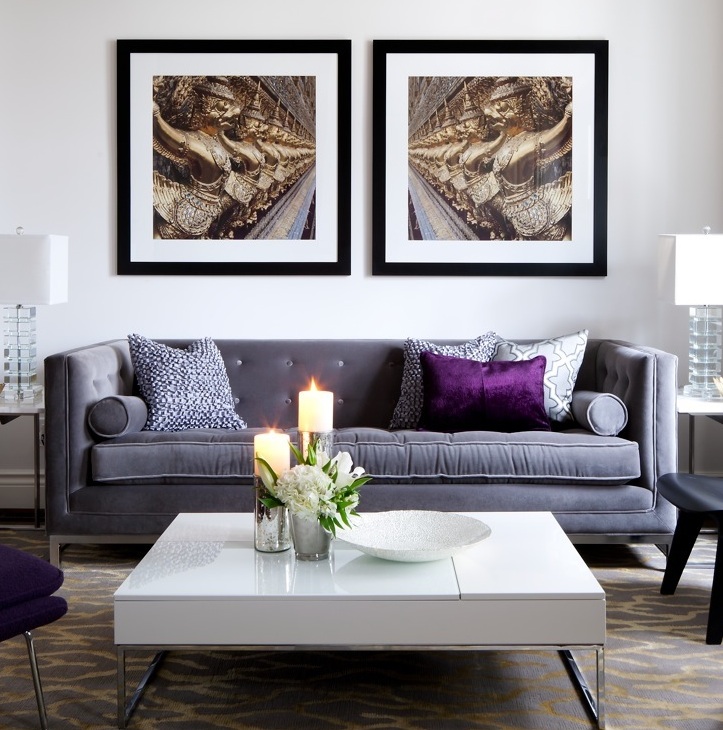
Any colour can be made more “neutral” by darkening it or adding gray to them. Pink/purple/cranberry colours can be made more appealing to both sexes with a brown/charcoal undertone (not a pink undertone).
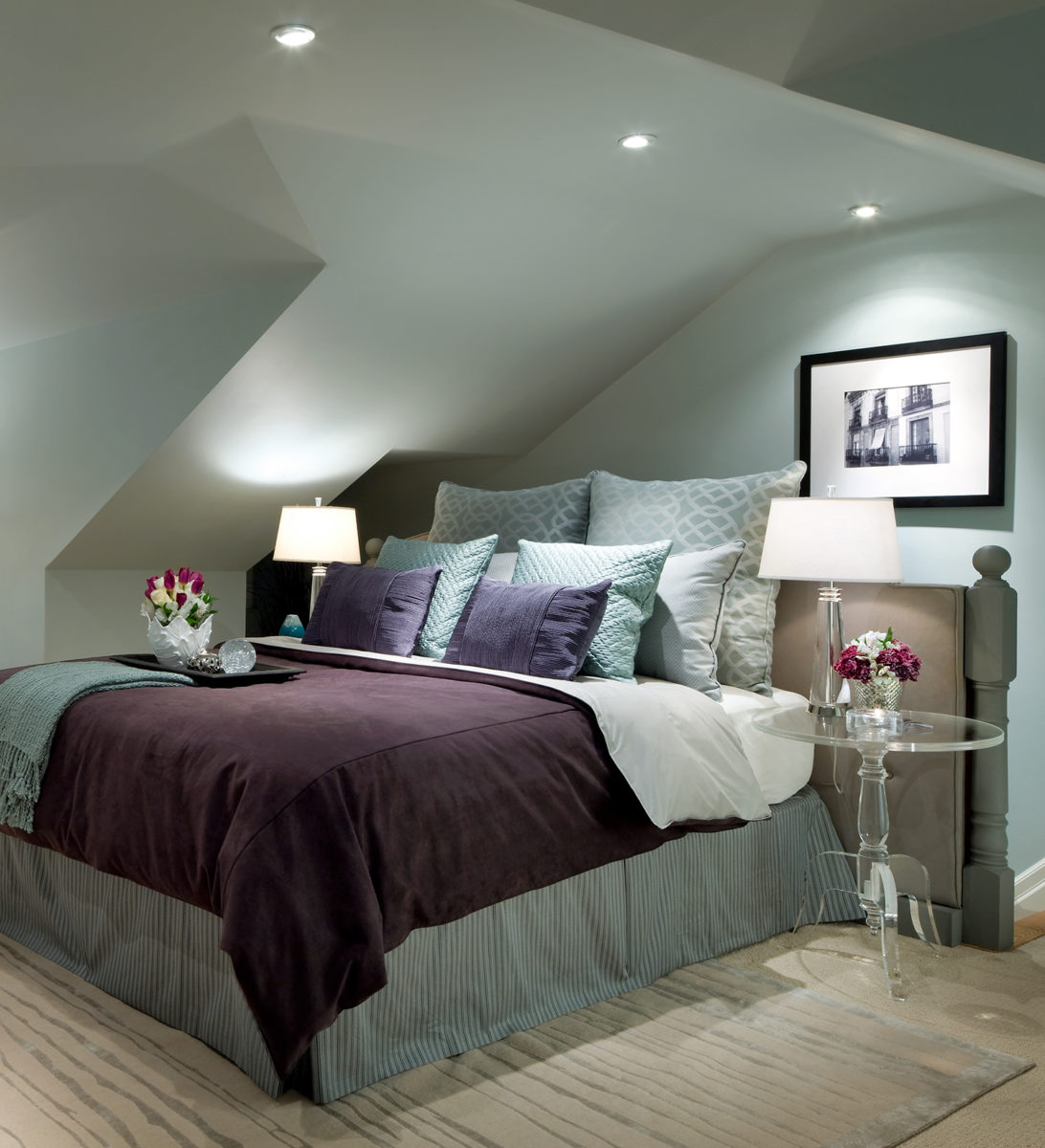
Go green!
Some colours, like green, are intrinsically gender-neutral because they haven’t been included in the typical cultural stereotype. Olive, dark green (think British Racing Green) and even lime green (think mojito) are accepted by both sexes almost equally. Green’s obvious colour position in nature has made it an easy go-to colour that makes everyone happy.
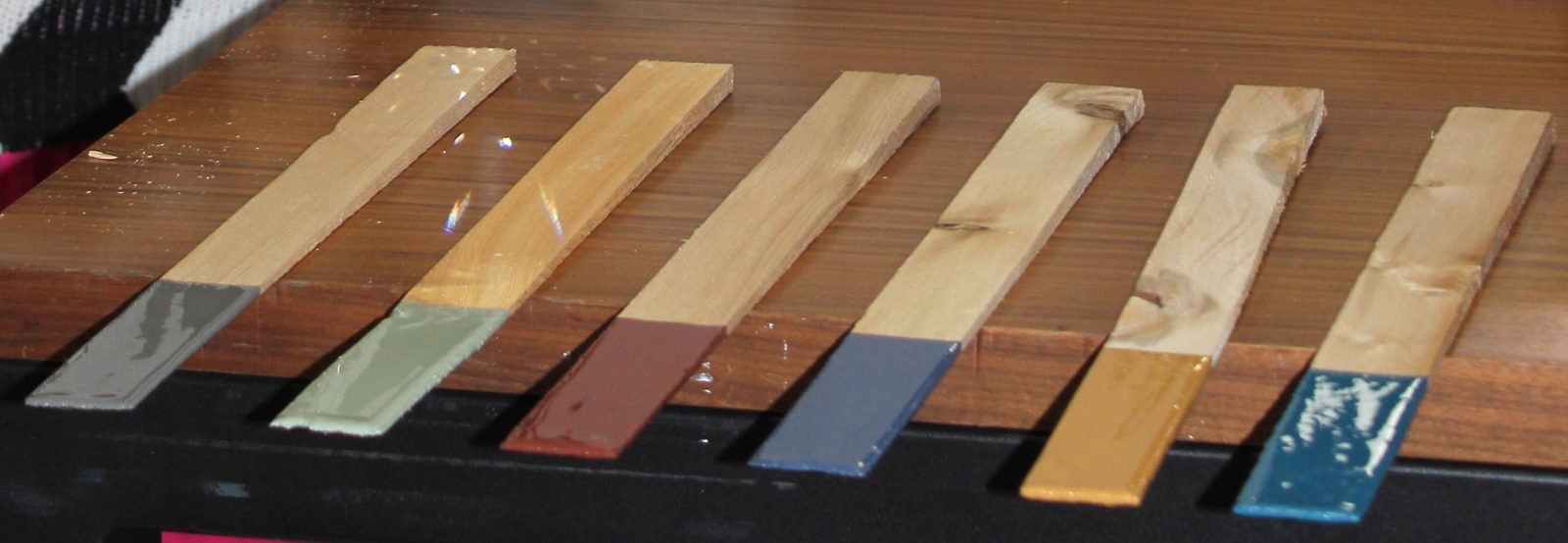
Jane’s favourite neutral colours (from left to right): Benjamin Moore Kendal Charcoal HC166; Dulux Eucalyptus Tree 10GY 30/104; Benjamin Moore Pancake Syrup 2104-10; Dulux signature Blue 30BB 10/112; Dulux Coastal Trail 00YY 28/352; Dulux Blue Rendezvous, 50BG 1-/175.
Look for less rigid, masculine shapes and alternatively, less curvy feminine shapes when buying furniture and accessories. Styles like mid-century modern for example that have both linear and curvy characteristics that makes them excellent crossover styles for a shared male/female space.
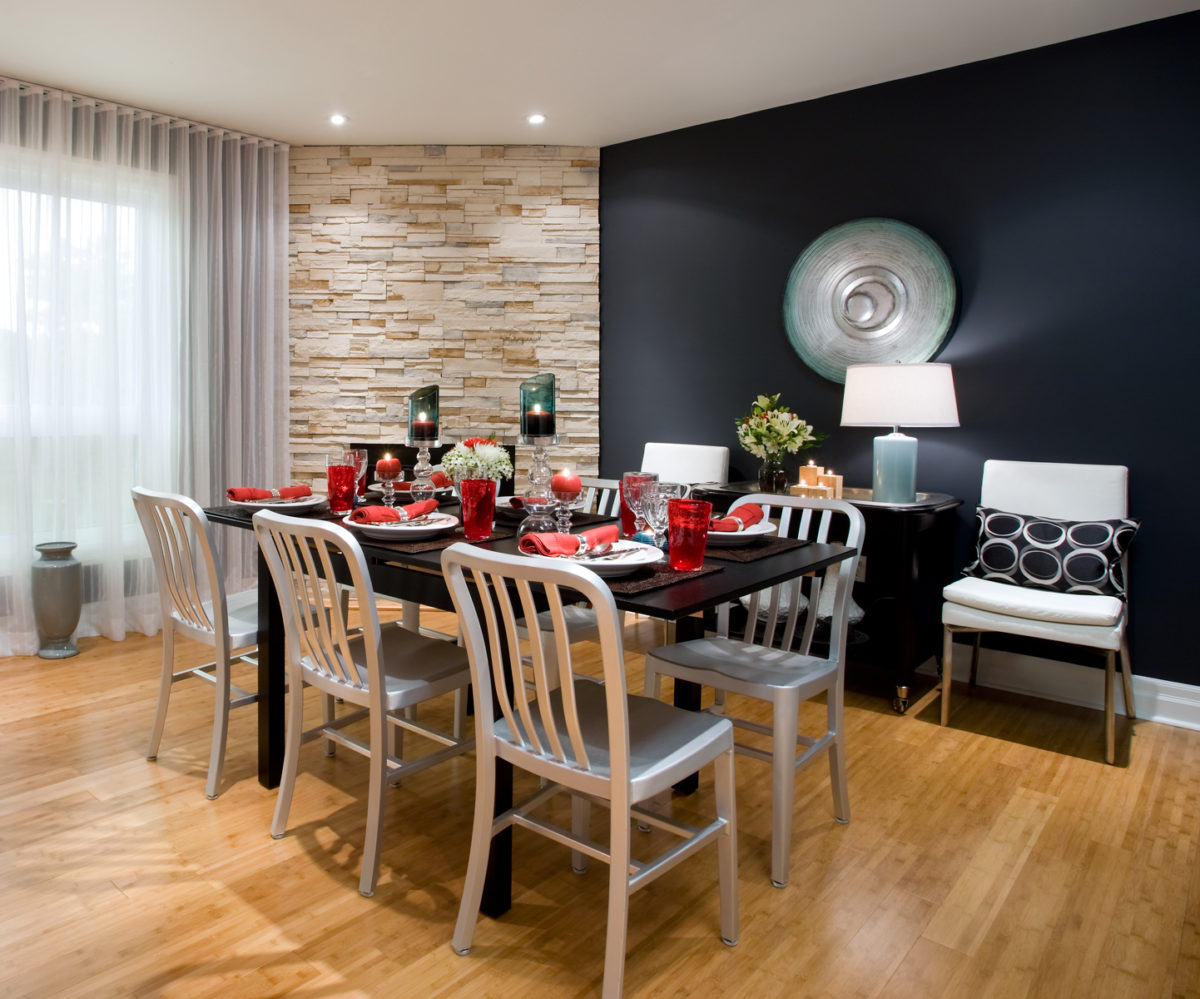
Wallpaper
Wallpaper is experiencing a revival, mostly due to its versatility and the strong design statement it can make in just about any room. Patterns are less precious and more modern with bold graphic patterns in rich colours and durable finishes making wallpaper a design option that’s growing in popularity among men and women.
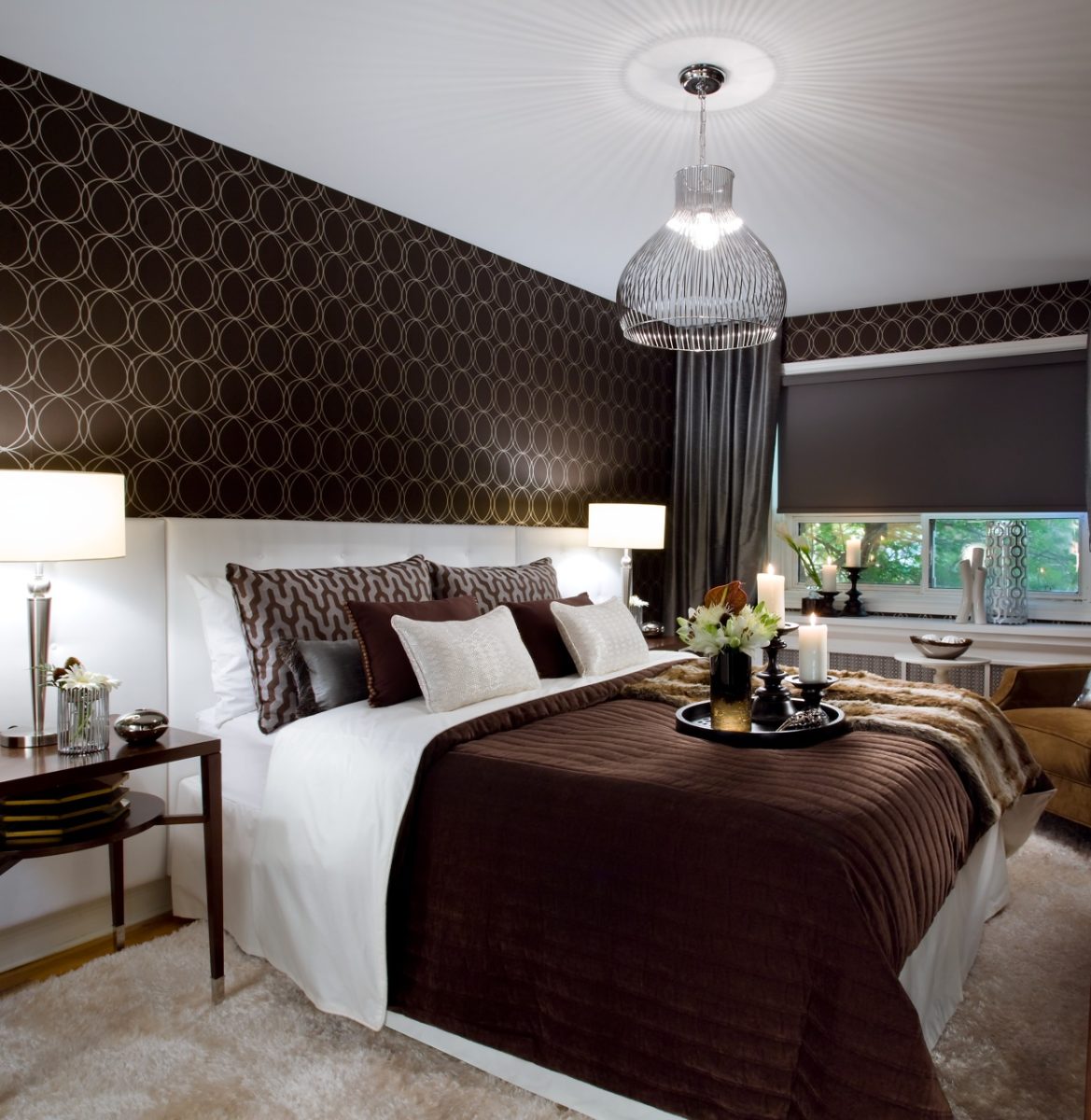
Furniture pieces that combine strong, clean lines with softness such as large accent pillows or cozy throws have become most popular. For example, a graphic pillow pattern in a favourite colour like orange (the most popular colour chosen equally by men and women) will pair well with a fur-covered pillow in cream!
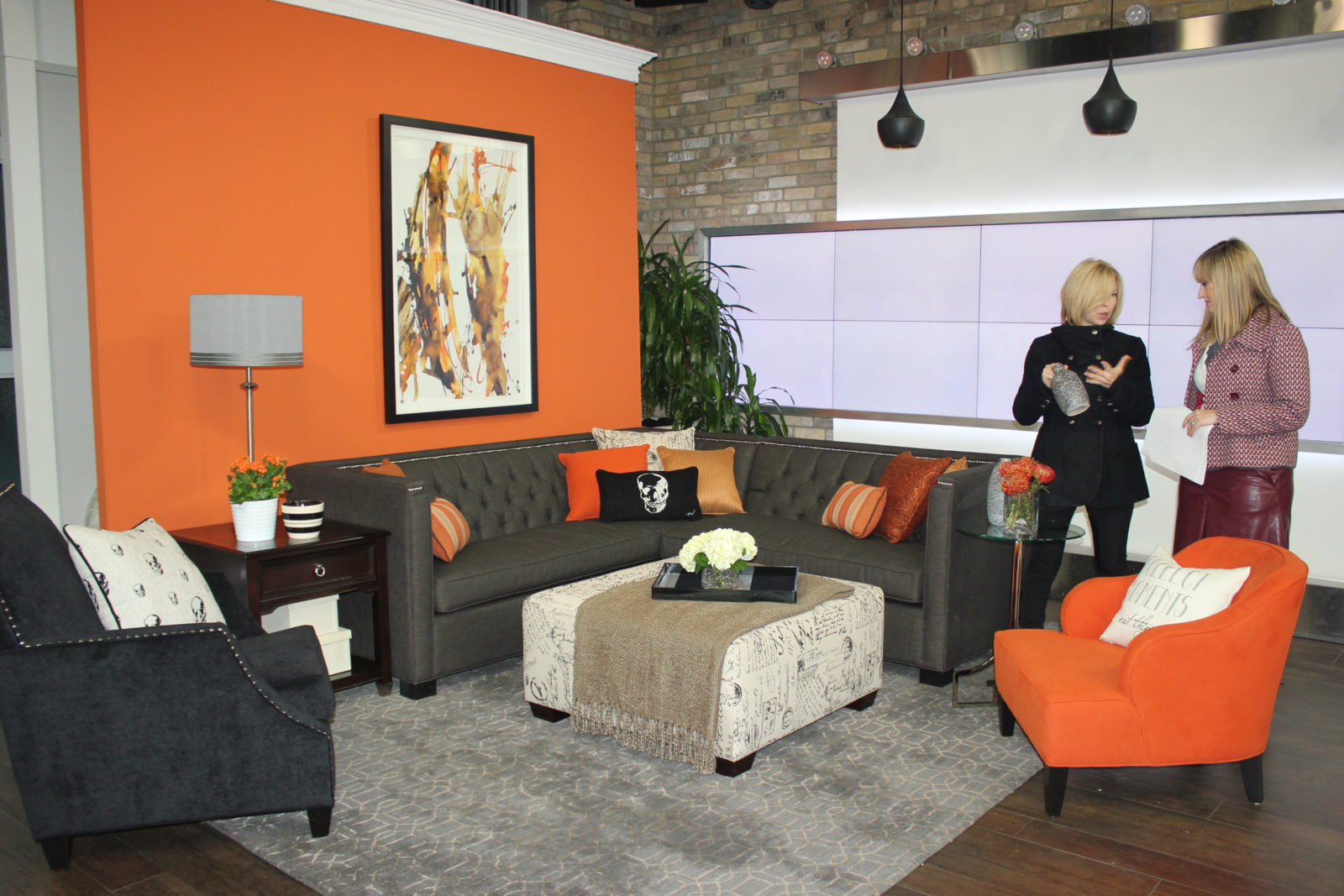
Jane’s recent segment about gender-neutral decor on The Marilyn Denis Show featured the Harlow sectional, Benny black velvet chair, both detailed with modern nail head and diamond tufting details.
The ottoman with script pattern and orange Nadine chair add strong statements to this space that both sexes will feel comfortable spending time in. The wall colour is Benjamin Moore, Burnt Caramel 2167-10.

